Gaza war compares with only two other conflicts that have polarised Western society to this extent
Intriguing similarities between the international convulsions caused by the Spanish civil war, the Vietnam war and the Gaza war help explain what’s going on today in our streets and on our campuses.
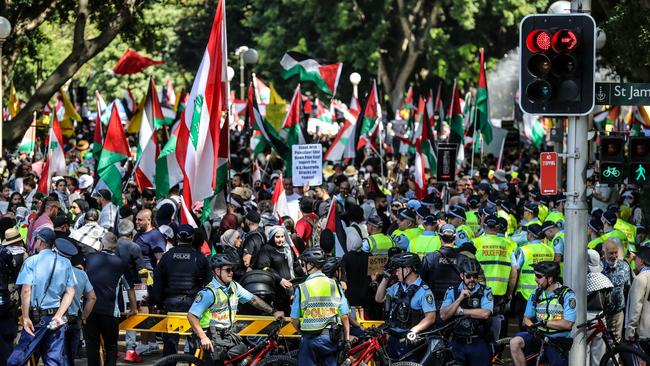
A tenuous ceasefire has ended the hostilities in Gaza but the deep impacts of that conflict on Australian society continue to reverberate.
The Gaza war has provoked greater polarisation, hostility and acrimony in our society than any other conflict this century. It has done the same across most Western democracies.
The question we must ask is: why? It’s not as if this blood-soaked century hasn’t served up a gruesome smorgasbord of human savagery to provoke and outrage Australians.
There were the 9/11 attacks that killed almost 3000 in the US; followed by the invasions of Afghanistan (90,000 killed) and Iraq (more than 100,000 killed); Darfur (300,000 deaths); the second Congo war (three million deaths); the Syrian civil war (300,000 deaths); Islamic State (more than 50,000 killed); the campaign against the Rohingya (up to 43,000 killed); the Yemeni civil war (375,000 deaths); and the Russian invasion of Ukraine (240,000 Ukranian deaths, 340,000 Russians killed, 1.6 million Ukrainians forcibly removed into Russia).
Most of these conflicts have elicited no public outcry in Australia, while protests lasted only days or weeks for the few that did generate demonstrations (the invasion of Iraq, the attack on Ukraine).
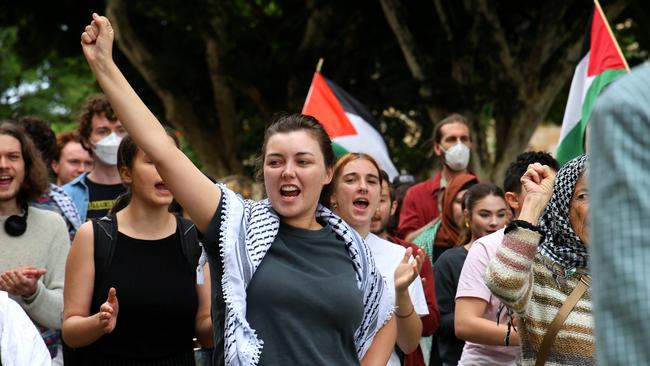
In contrast, the Gaza war has provoked angry weekly protests closing city streets and civic spaces for more than 15 months; encampments on university campuses; huge campaigns of posters and graffiti; and even its own protest clothing. National politics has descended into mutual acrimony as elected politicians accuse opponents of moral turpitude for what they have said or not said; done or not done. National security agencies warn of dangerous currents of extremism and the fraying of social cohesion. Synagogues are graffitied and firebombed.
The outsize impact of this distant, relatively small conflict on Australian and other Western societies needs an explanation. Some of the reasons may be suggested by comparing the international impact of the Gaza war with two other small conflicts that similarly provoked social and political convulsions across the Western world during the past century.
As with all historical analogies, the similarities are not exact; a significant proportion of the Gaza war protesters have historical or religious ties to the combatants in a way these earlier protesters did not.
The Spanish civil war broke out in 1936 between the Republican forces on the left and the Nationalist forces on the right. It had a radicalising effect on societies in Europe, North America and here in Australia, where it caused a surge in memberships of communist and fascist organisations.
So concerned were the governments of Britain and France at the prospect that a similar communist-fascist civil war would break out in their own societies that they proposed a non-intervention treaty and enforced a weapons blockade on the Spanish conflict.
Eventually 32,000 foreign volunteers fought on the Republican side and 11,000 foreigners fought for the Nationalists. Public intellectuals became prominent proponents of the contending sides: George Orwell and Ernest Hemingway for the Republicans; Evelyn Waugh and JRR Tolkien for the Nationalists.
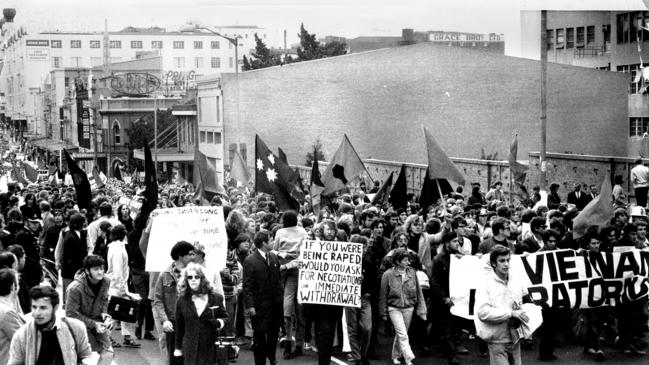
The Vietnam war began in the early 1950s but surged to the forefront of global attention following the Tet offensive in 1968. That year and following years brought huge demonstrations across Western Europe, North America, Latin America and Australia, promoting causes that went way beyond the war itself: anti-racism, feminism, post-materialism, environmentalism. These movements of the left provoked a reaction on the right in the form of neoconservatism and neoliberal economics, setting up the conservative-progressive divides that would define politics in the last quarter of the 20th century and the first quarter of this century across the Western world.
There are intriguing similarities between the international convulsions caused by the Spanish civil war, the Vietnam war and the Gaza war that help us understand what’s going on today in our streets and on our campuses.
The conflicts in Spain and Vietnam sparked confrontations in Western countries that had been brewing for years, in the form of extensive labour unrest and economic uncertainty in the ’30s and a rising countercultural revolt in the ’60s. And while the activists in each case sympathised with those fighting in Spain and Vietnam, their ongoing activism centred on local grievances – particularly the loss of legitimacy of domestic governments and elites.
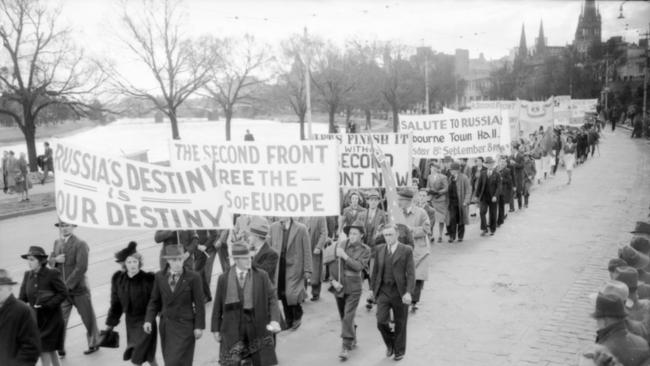
The communists and fascists facing off on the streets of Birmingham or Chicago in the ’30s were focused not on Spanish concerns but their visions for British or American society. In the ’70s the Baader-Meinhof terrorists were inspired by the Vietcong but were focused on the alleged fascism of the West German state. The enemy in the foreign war became a metaphor for the enemy closer to home.
The Gaza war protesters are clearly angry about Israel’s conduct of the war in Gaza and have drawn inspiration from being part of a transnational protest movement. The commonality of chants and slogans and choreography of campus encampments and occupations shows how extensively Australian protesters conform to those in other countries. What is also significant is their level of anger directed at Australian institutions – governments, universities, corporations. Witness the repeated denunciations of Foreign Minister Penny Wong at the University of Tasmania in 2024 or the vitriol directed towards university leaders, or the firebombing of government members’ electorate offices.
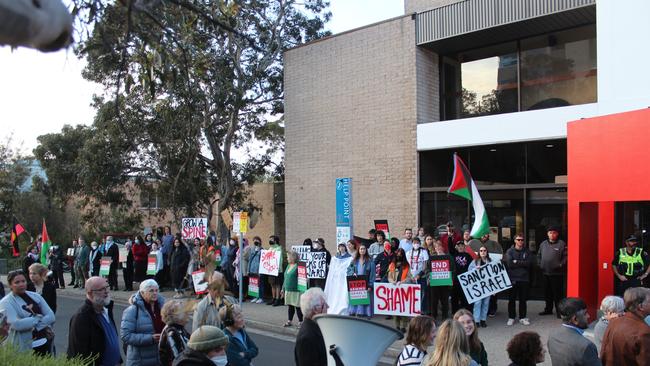
Protesters’ demands that these institutions end all contact with Israel or those believed to support the war in Gaza explain part of this, but the vehemence of the protests on our streets and campuses also draws on collapsing public trust in major public institutions in Western societies – itself the legacy of cynical politics, economic crisis and the handling of the pandemic.
All three transnational convulsions also trace generational fault lines. In the ’30s and again the ‘60s, young, privileged, educated generations spurned the world created by their grandparents and parents, into which they were expected to conform. The conflicts in Spain and Vietnam were interpreted as rejections of the traditional, privileged, unjust order by the progressive forces of liberation, rationality and justice; their opponents saw the same conflict as the defence of decency and rationality against nihilism and licentiousness.
In the ’30s the traditional order had been shaken by WWI and the Depression; in the ’60s anti-colonial and civil rights movements and the prospect of nuclear Armageddon had punctured the legitimacy and rationality of the post-World War II settlement.
The Gaza war protests have strong generational edge also, as a cohort of young, privileged and educated people reject societies they see as marked by increasing inequality, narrowing opportunity and tightening limits on growth.
Comparing the street marches provoked by the wars in Spain and Vietnam with those on our streets today, the sense of moral certainty among the protesters is another point of similarity. Each era of protest had been preceded by a crisis in the moral frameworks that had previously provided societies’ glue.
The slaughter of the WWI trenches provoked a nihilism in Western culture, while the conformism and empty materialism of the ’50s provided plenty of tinder for a countercultural revolt.
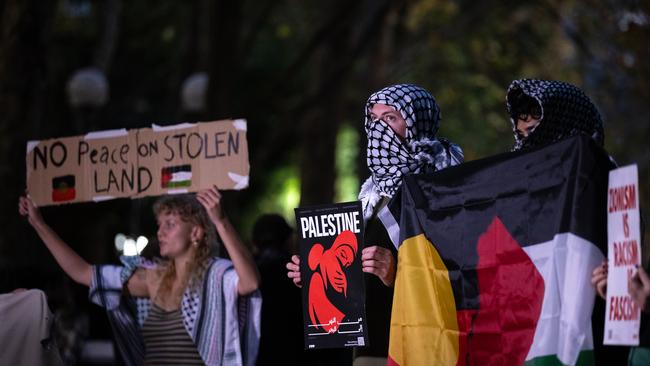
In our own time, the precipitous demise of religiosity has been a major and understudied aspect of Western societies. Each context provoked a search for moral authenticity, particularly among the young – and the adoption of a galvanising cause and membership of a movement animated by moral certainty provided that sense of personal authenticity.
The 1930s, 1960s and 2020s convulsions also unfolded in societies that had lost positive, unifying national visions for the future. The world on which the Edwardian era had built the golden age had crumbled by the ’30s as national politics across the Western world stumbled forward, bereft of purpose. The post-war economic boom and the institutions that undergirded it were fraying in the ’60s and the Keynesian economics that gave such vigour and purpose to state-led growth was being seriously questioned. Today, national governments in the West have had their confidence and purpose eviscerated by a quarter century of terrorism, financial crisis and pandemics. In all three eras, a lack of national purpose and vision creates a vacuum to be filled by angry partisanship and extreme language and action.
Technology has played a role in all three eras of outrage too. In the ’30s the radio and newsreel carried awareness of transnational protest and conflict quickly across borders and continents. Television did the same in the ’60s.
Today it is social media, a factor that, unlike radio, newsreels or TV, intentionally magnifies the polarisation, emotionalism and outrage of the contending forces in our own age of division and discontent.
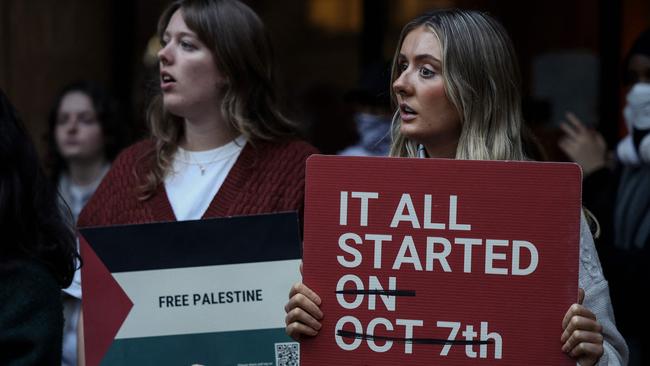
The transnational social and political upheavals sparked by the Spanish civil war and the Vietnam war shaped politics across the Western world for at least a generation afterwards. What remains to be seen is whether the protests and polarisation sparked by the Gaza war will have the same effect.
On the one hand, the underlying factors provoking the protests are powerful, whether generational, political, social or technological – and won’t moderate even if a peace plan succeeds in the Middle East. On the other hand, the Gaza protests have not been as extensive as those sparked by the Spanish civil war or the Vietnam war, both of which provoked broad political movements that affected national politics profoundly.
The Gaza protests have not inspired or provoked broader public engagement in Australia or any other Western country. Neither have they attracted the cultural and intellectual leaders the earlier conflicts did – icons who justified, explained and exhorted the activists to greater heights.
As we contemplate the recent firebombings of synagogues, childcare centres and electorate offices, we must remain mindful of another disturbing analogy with the ’60s: the possibility that protest will spiral into nihilist violence. The riots in the US in 1968 and the terrorism of the Weathermen, the Red Army Faction and the Red Brigades are a salutary reminder to governments, policy and security agencies of how fragile our social cohesion can be.
Michael Wesley is deputy vice-chancellor and professor of politics at the University of Melbourne.


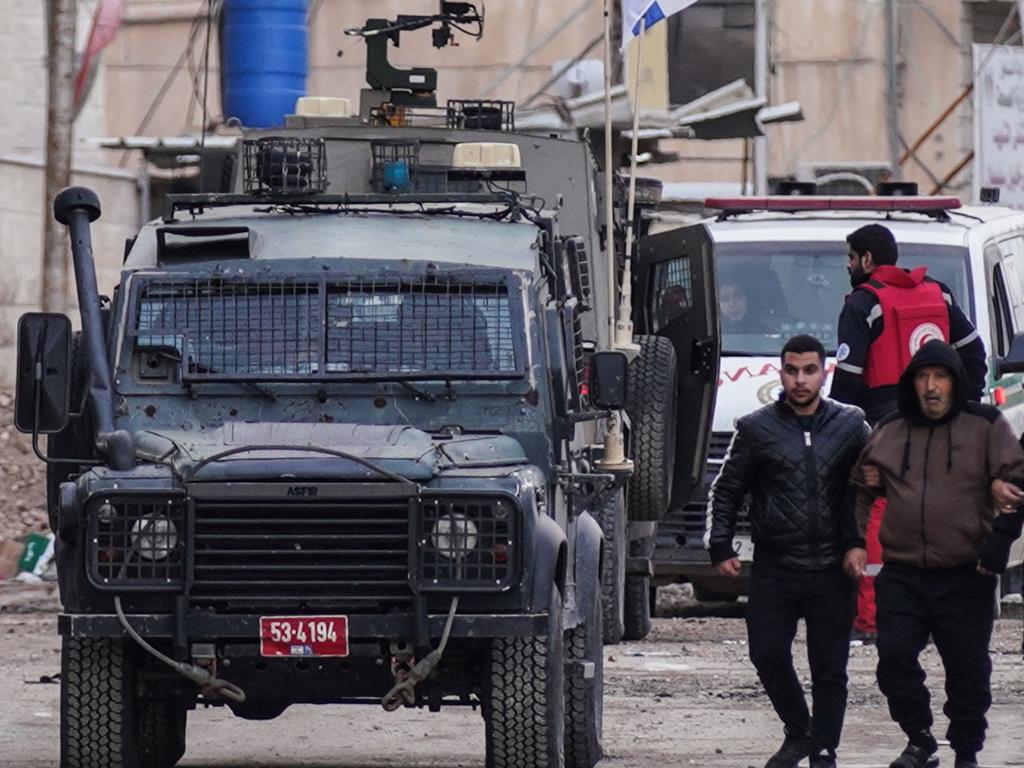
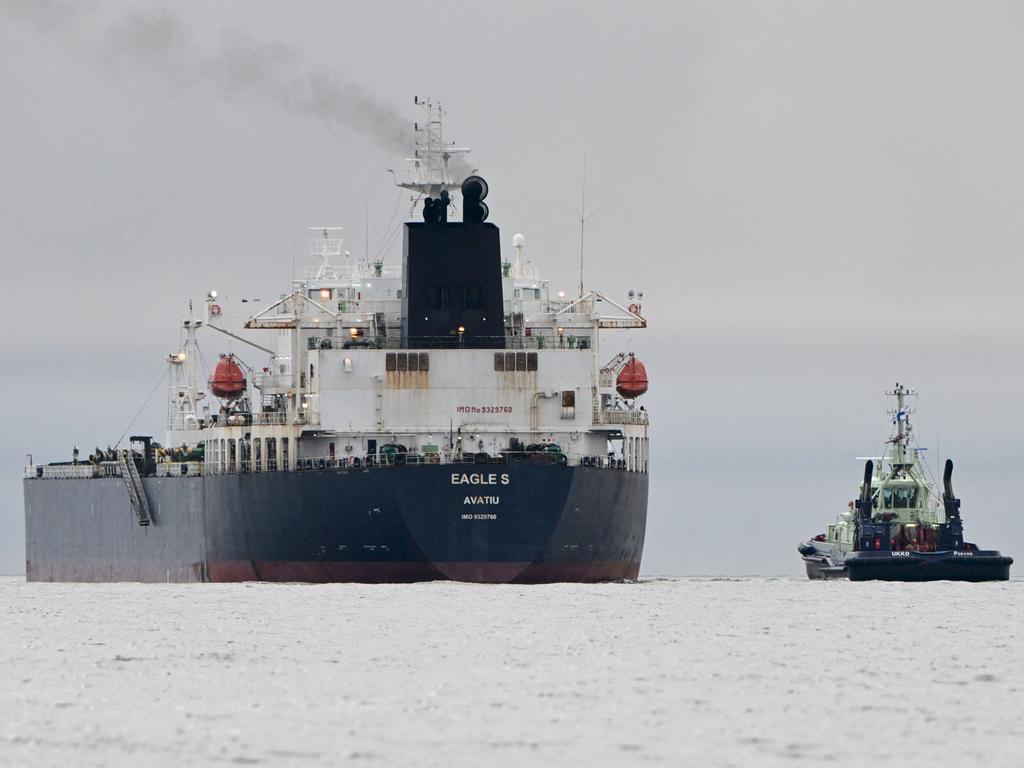


To join the conversation, please log in. Don't have an account? Register
Join the conversation, you are commenting as Logout